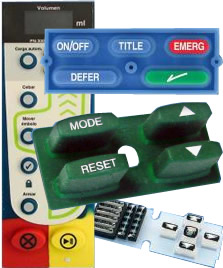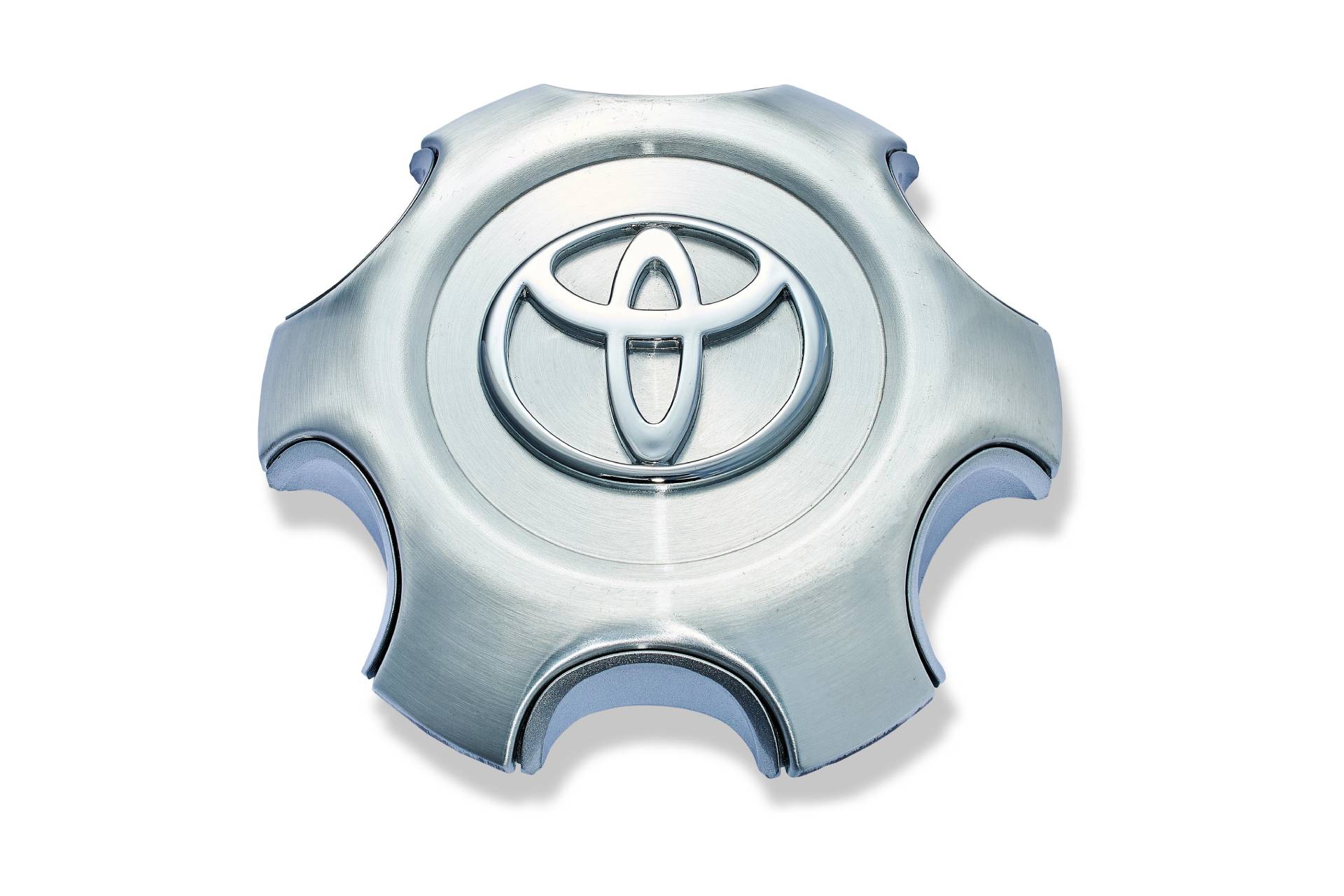Everything OEMs should know about designing Rubber Keypads
A Comprehensive Overview to the Manufacturing and Processing of Rubber Keypads for Optimal Performance
The manufacturing and processing of rubber keypads play an important role in their performance and usability. Material selection, design precision, and advanced production strategies considerably influence their durability and effectiveness. Recognizing these components is vital for developing premium items. As numerous technologies arise in this field, exploring their ramifications could reveal new requirements for performance and user experience. What key facets will shape the future of rubber keypads?
Recognizing Rubber Keypads: Materials and Kinds
Rubber keypads are essential parts in countless gadgets, offering an equilibrium of longevity and tactile feedback. These keypads are largely made from silicone or artificial rubber, products selected for their versatility and strength. Silicone rubber, particularly, is preferred for its superb temperature resistance and longevity, making it suitable for various applications, from customer electronic devices to commercial equipment.
There are a number of sorts of rubber keypads, including dome button keypads, which utilize a dome-shaped device that supplies responsive comments when pressed. In addition, there are also level keypads, which include a smooth surface and are often used in medical gadgets and remote controls. The option of product and type influences the keypad's performance, feel, and total individual experience. Comprehending these elements is vital for producers and designers aiming to develop reputable and reliable interfaces in their products.
The Manufacturing Process: From Style to Manufacturing
The production procedure of rubber keypads includes a number of crucial stages, beginning with style and finishing with manufacturing. Originally, developers develop comprehensive specs and models, guaranteeing the keypad fulfills aesthetic and useful demands. Computer-aided design (CAD) software is typically made use of to imagine the design and functions prior to proceeding.
As soon as the design is finalized, material choice is important, with options commonly including silicone or natural rubber. In the next stage, mold and mildews are produced based upon the approved styles, which will shape the keypads during manufacturing.
Following mold and mildew production, the manufacturing phase begins, where rubber is combined with ingredients to boost performance. The combination is after that put right into molds and subjected to warm and stress, allowing it to strengthen and heal.
The ended up keypads undertake top quality checks to confirm they fulfill well-known requirements, adhered to by product packaging for circulation. This comprehensive procedure assurances peak efficiency in the final item.
Trick Methods in Rubber Molding
In the domain of rubber keypads, numerous molding strategies play a pivotal duty in determining the high quality and functionality of the end product. One common technique is compression molding, where raw rubber is put in a warmed mold and mildew and stress is used, permitting effective mass manufacturing and harmony. Another substantial method is injection molding, which involves injecting heated rubber into a mold and mildew, supplying better precision and complex forms. Transfer molding, a crossbreed of both approaches, is additionally utilized, specifically for elaborate styles, as it combines the advantages of both processes. Additionally, fluid silicone rubber (LSR) molding is gaining traction due to its flexibility and toughness, making it perfect for high-performance applications. Each technique possesses distinct characteristics, affecting aspects such as cycle time, product waste, and production costs. Picking the proper molding technique is crucial for accomplishing peak efficiency in rubber keypads.
Surface Finishing and Texturing Options
Surface ending up and texturing options play an important duty in improving the tactile experience and visual allure of rubber keypads. Suppliers use numerous strategies to create unique surface qualities that affect user communication and item layout. Typical ending up methods include matte, shiny, and satin finishes, each supplying various aesthetic results and grasp degrees. Texturing choices, such as elevated patterns, grooves, or stippling, additionally improve capability by improving grip and decreasing slippage during use.
Furthermore, details appearances can be customized to satisfy ergonomic needs, giving comfort during long term use. The option of surface area finishes and appearances can be influenced by the designated application of the keypad, whether it be for consumer electronics, automobile controls, or commercial devices. Ultimately, mindful factor to consider of these choices contributes considerably to user contentment and overall item performance, making them vital components in the layout and manufacturing procedure of rubber keypads.
Quality Assurance Procedures in Rubber Keypad Production
Quality assurance measures in rubber keypad manufacturing are vital for ensuring item dependability and performance. These actions encompass material option standards, rigorous testing treatments, and stringent final inspection standards. With each other, they form a thorough framework that aids suppliers copyright top quality throughout the production process.
Material Option Standards
Picking the ideal materials for rubber keypads is crucial, as it straight influences their performance, durability, and user experience. Trick standards for product selection include tensile toughness, resilience, and ecological resistance. The choice of rubber compound, such as silicone or thermoplastic elastomer (TPE), plays an essential role in attaining desired responsive feedback and longevity. Additionally, aspects like chemical compatibility, temperature security, and UV resistance have to be considered to assure optimal performance in different applications. Producers must additionally review the ease of processing and cost-effectiveness of materials, balancing high quality with budget restrictions. Ultimately, the ideal material choice not only enhances the keypad's performance but likewise adds to total item top quality and consumer satisfaction.
Examining Treatments Carried Out
After determining the appropriate materials for rubber keypads, strenuous testing procedures are implemented to validate that the last items fulfill sector criteria and client expectations. These treatments typically consist of mechanical testing, which reviews the durability and flexibility of the rubber under different conditions. Additionally, ecological screening evaluates the keypads' performance under temperature level variations, humidity, and direct exposure to chemicals. Electrical testing confirms the keypads work properly with digital components, confirming responsiveness and conductivity. Additionally, tactile comments is evaluated to guarantee user contentment. These considerable testing procedures are vital in identifying any kind of incongruities or flaws prior to automation, ultimately improving the dependability and performance of rubber keypads in their intended applications.

Final Inspection Standards
Thorough last inspection requirements are critical in rubber keypad manufacturing to assure that each system meets the defined standards for capability and appearance. his response This procedure normally involves visual analyses to recognize any kind of surface defects, such as staining or flaws. Furthermore, tactile examinations determine that the keypads respond precisely to touch, preserving the needed level of sensitivity. Resilience tests might likewise be carried out, mimicing extended use to validate the durability of the keypad under you can look here numerous conditions. Adherence to market laws and client specs is validated to preserve high quality guarantee. By implementing these rigorous inspection actions, suppliers can greatly lower the risk of defects, ensuring that the last item is trustworthy and fulfills customer assumptions, inevitably improving customer complete satisfaction.
Innovations in Rubber Keypad Modern Technology
As technology proceeds to progress, advancements in rubber keypad modern technology are improving user interfaces across numerous markets. One substantial advancement is the combination of capacitive touch sensing units within rubber keypads, enabling a much more receptive and flexible customer experience. This innovation enables individuals to communicate with gadgets with touch, improving functionality without compromising the responsive responses that rubber keypads are recognized for.
Additionally, enhancements in material formulas have brought about the growth of even more sturdy, weather-resistant rubber, making keypads ideal for commercial and outdoor use. Boosted printing strategies likewise enable high-resolution graphics and backlighting alternatives, increasing visibility and visual appeal.

Developments in manufacturing processes, such as 3D printing, are allowing personalized designs and fast prototyping, streamlining production timelines. These innovations collectively add to a lot more straightforward and reliable rubber keypads, guaranteeing they satisfy the needs of modern-day applications while preserving their core advantages.
Ideal Practices for Layout and Performance
Creating efficient rubber keypads calls for careful examination of both looks and performance. Rubber Keypads. A well-designed keypad must stabilize ergonomic concepts with visual interest enhance user experience. Key variables consist of size, form, and spacing of switches, ensuring they are very easy to press while stopping unexpected activation. Using contrasting colors and textures can enhance visibility and responsive feedback, assisting customers in differentiating between tricks
Additionally, the selection of materials plays a necessary role; top notch rubber substances can enhance resilience and resistance to wear. It is likewise essential to think about the combination of attributes such as backlighting and personalized graphics, which can boost functionality in numerous environments.
Ultimately, prototyping and user testing are very useful in the design process, enabling changes based upon real-world feedback. By sticking to these finest practices, manufacturers can create rubber keypads that not just look enticing but likewise satisfy the practical demands of customers successfully.
Often Asked Inquiries
Exactly how Do I Choose the Right Rubber Material for My Keypad?
To select click this the best rubber product for a keypad, one ought to think about aspects such as resilience, environmental resistance, tactile feedback, and compatibility with the intended application, making certain suitable efficiency and user contentment in different problems.
What Are the Environmental Effects of Rubber Keypad Manufacturing?
Rubber keypad production can result in environmental effects such as logging for all-natural rubber sources, air pollution from chemical processes, and waste generation. Sustainable practices and products can mitigate several of these negative effects on communities.
Can Rubber Keypads Be Recycled or Reused?
Rubber keypads can be recycled, but the process depends on the specific products made use of in their production. Recycling them in different applications is additionally possible, adding to throw away decrease and advertising sustainability in producing techniques.
What Is the Average Lifespan of a Rubber Keypad?
The ordinary lifespan of a rubber keypad generally ranges from 5 to one decade, relying on usage, environmental variables, and upkeep. Normal care can extend its functionality, while excessive wear may reduce its sturdiness.
Exist Any Health And Wellness Worries Associated to Rubber Keypad Materials?
There are potential wellness concerns related to rubber keypad products, consisting of allergies to specific chemicals and toxic irritants used in manufacturing. Proper handling and recognition of material make-up can mitigate these threats for individuals.
There are several kinds of rubber keypads, consisting of dome switch keypads, which use a dome-shaped device that supplies responsive responses when pushed. Selecting the appropriate products for rubber keypads is necessary, as it straight influences their capability, toughness, and customer experience - Rubber Keypads. After identifying the ideal products for rubber keypads, strenuous testing treatments are implemented to validate that the last items fulfill industry criteria and client assumptions. Rubber keypad manufacturing can lead to environmental impacts such as deforestation for natural rubber sources, contamination from chemical processes, and waste generation. Rubber keypads can be reused, however the procedure depends on the specific products used in their manufacturing